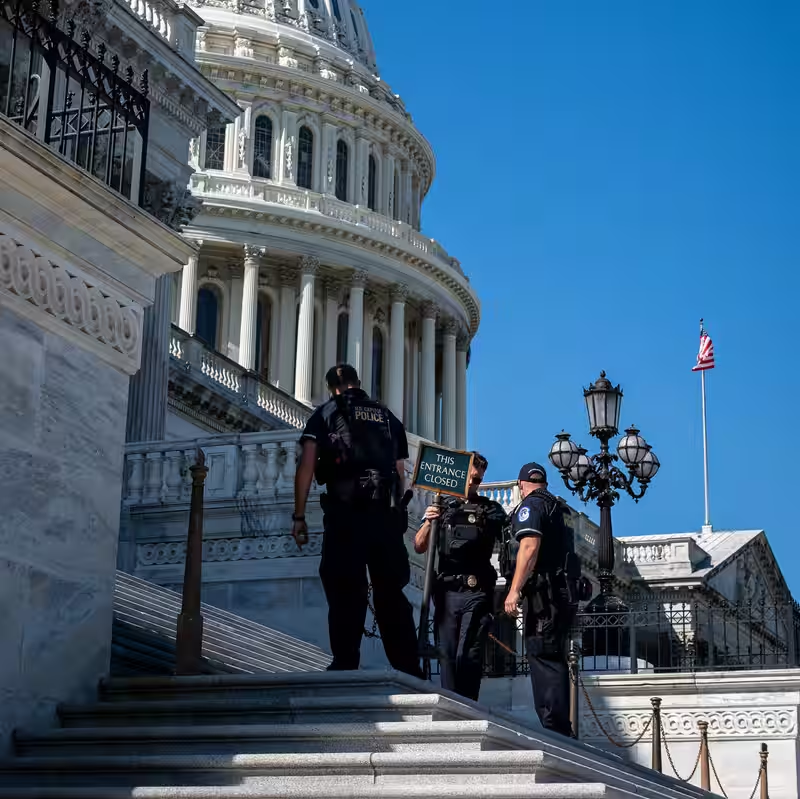
What began as a political standoff in Washington is now hitting Main Street—and rural backroads—with real consequences. As the federal government shutdown enters its second week, Americans across the country are feeling the ripple effects: 4,000 federal workers have been laid off, farmers are flying blind without critical data, and vital medical services in Native communities have been curtailed.
This isn’t just a budget battle—it’s a crisis unfolding in real time for everyday people who rely on federal programs to survive, plan, and heal.
Government Shutdown: Who’s Being Hit Hardest?
The Trump administration confirmed that over 4,000 federal employees have already been terminated—not furloughed, but permanently laid off—as agencies scramble to cut costs. These aren’t just bureaucrats; they’re inspectors, analysts, clerks, and support staff whose work keeps food safe, planes in the air, and benefits flowing.
Farmers Left in the Dark
For America’s agricultural heartland, the shutdown couldn’t come at a worse time. October is when farmers finalize plans for next year’s crops—deciding what to plant, how much seed to buy, and where to invest. But the U.S. Department of Agriculture (USDA) has suspended its weekly crop reports, price forecasts, and export data.
“It’s like trying to navigate a storm with no compass,” said Iowa corn grower Maria Delgado. “We’re making six-figure decisions based on guesswork.”
Without timely market intelligence, farmers risk overplanting, underpricing, or missing export windows—potentially costing them thousands.
Native Communities Face Health Care Cuts
Perhaps the most alarming impact is in Native American communities, where the Indian Health Service (IHS)—already chronically underfunded—has been forced to scale back operations.
Clinics in South Dakota, Arizona, and Oklahoma have reduced hours or suspended non-emergency care. Dental services, maternal health checkups, and mental health counseling—critical in regions with high suicide and diabetes rates—have been put on hold.
“When IHS shuts down, our people don’t just lose appointments—they lose lifelines,” said Dr. Lena Two Bears, a physician on the Pine Ridge Reservation.
| Affected Sector | Impact of Shutdown | Population Affected |
|---|---|---|
| Federal Workforce | 4,000+ layoffs; delayed pay for others | Government employees & families |
| Agriculture | No USDA crop reports or market data | 2+ million U.S. farmers |
| Native Health | IHS clinics reducing non-emergency care | 2.6 million Native Americans |
| National Parks | Limited staffing, trash buildup, safety risks | Visitors & local tourism economies |
Broader Ripple Effects
The shutdown’s reach extends far beyond headlines:
- Small businesses can’t access SBA loan approvals.
- Food safety inspections are delayed at high-risk facilities.
- Scientific research at NIH and NOAA has stalled.
- Tax refunds for certain filers may face delays.
Why This Shutdown Feels Different
Unlike past shutdowns that relied on furloughs, this one includes actual layoffs—a shift that could permanently reshape the federal workforce. Experts warn that even if the government reopens next week, trust in public institutions may not recover as quickly.
“You can restart a server,” said policy analyst Jamal Wright. “But you can’t instantly rebuild a career—or a community’s faith in the system.”
What’s Next?
With no clear end in sight, advocacy groups are urging Congress to pass a short-term funding bill. Meanwhile, Americans are left to cope with the fallout of a political impasse they didn’t create—but are paying for in real time.




